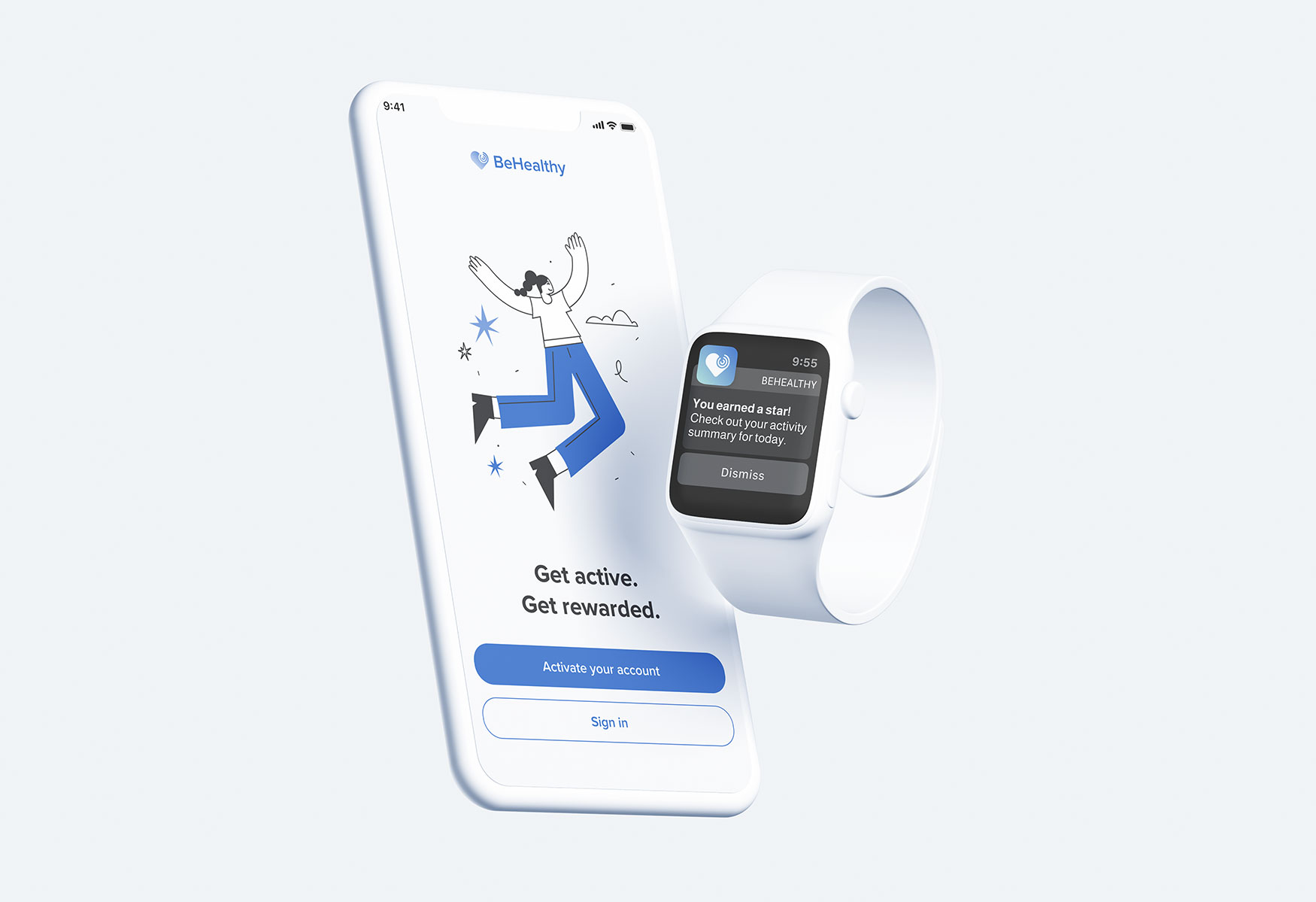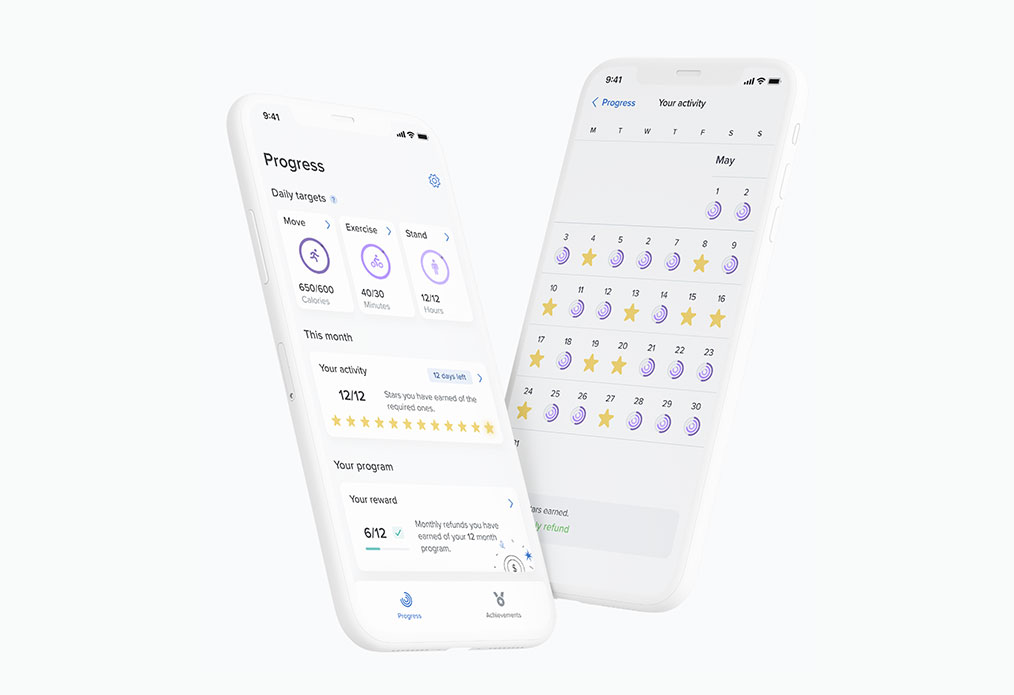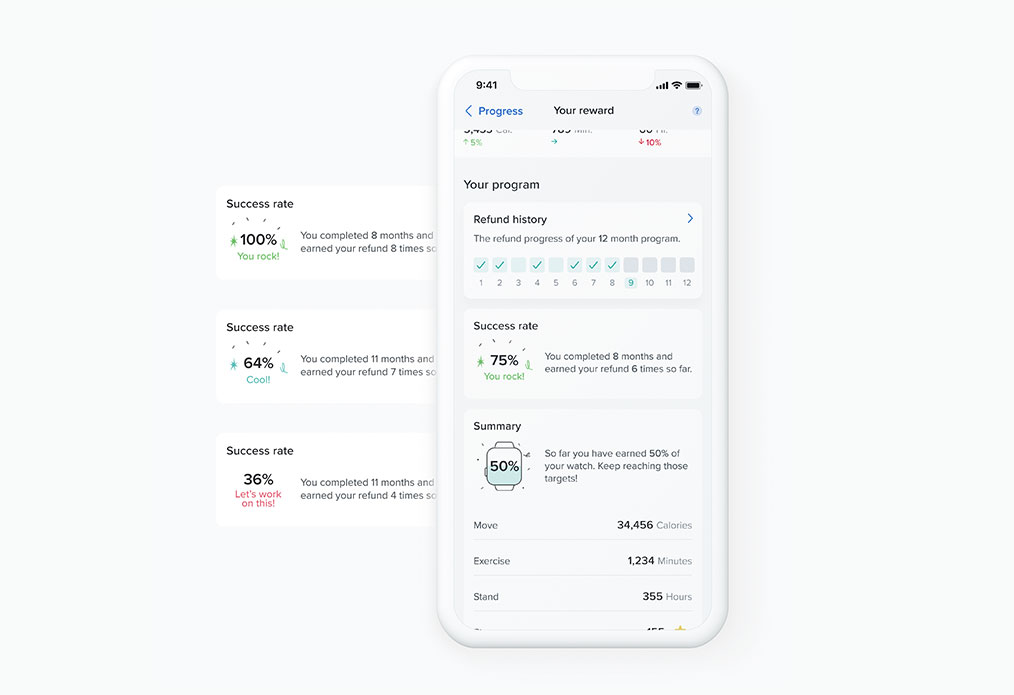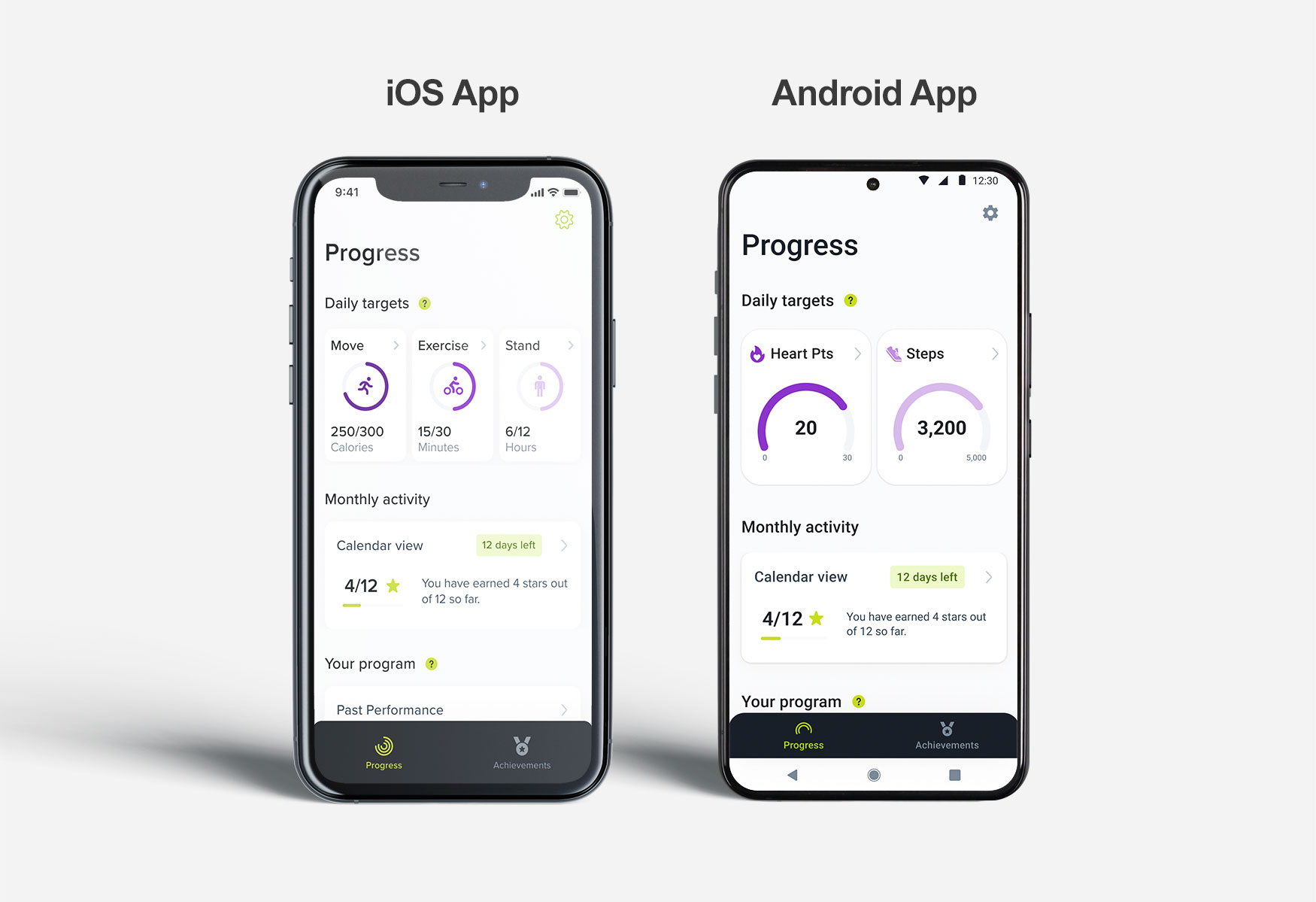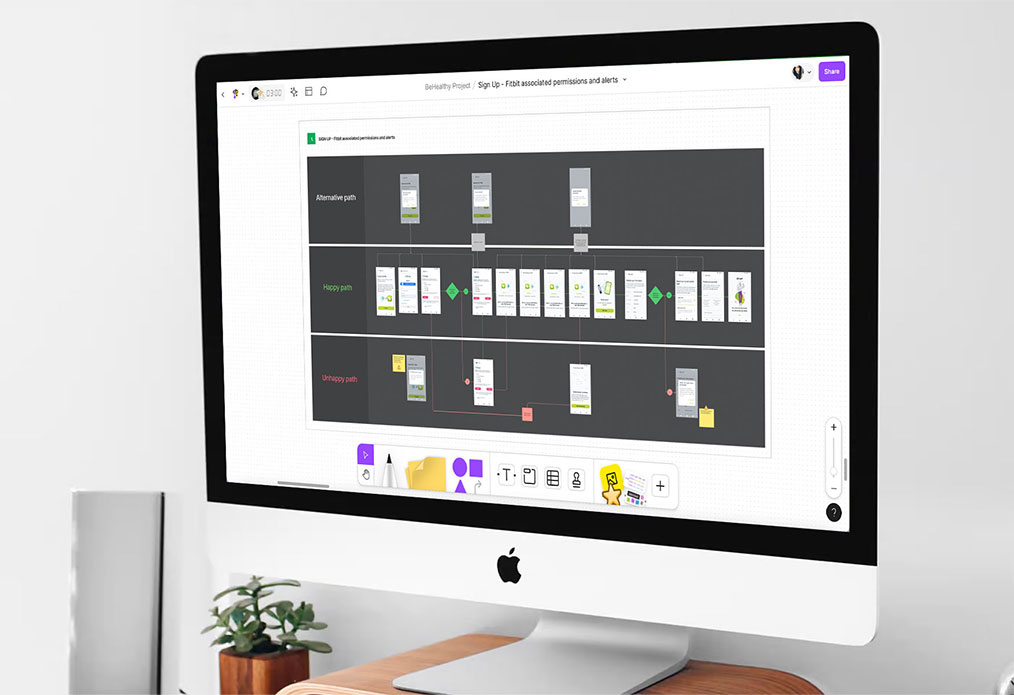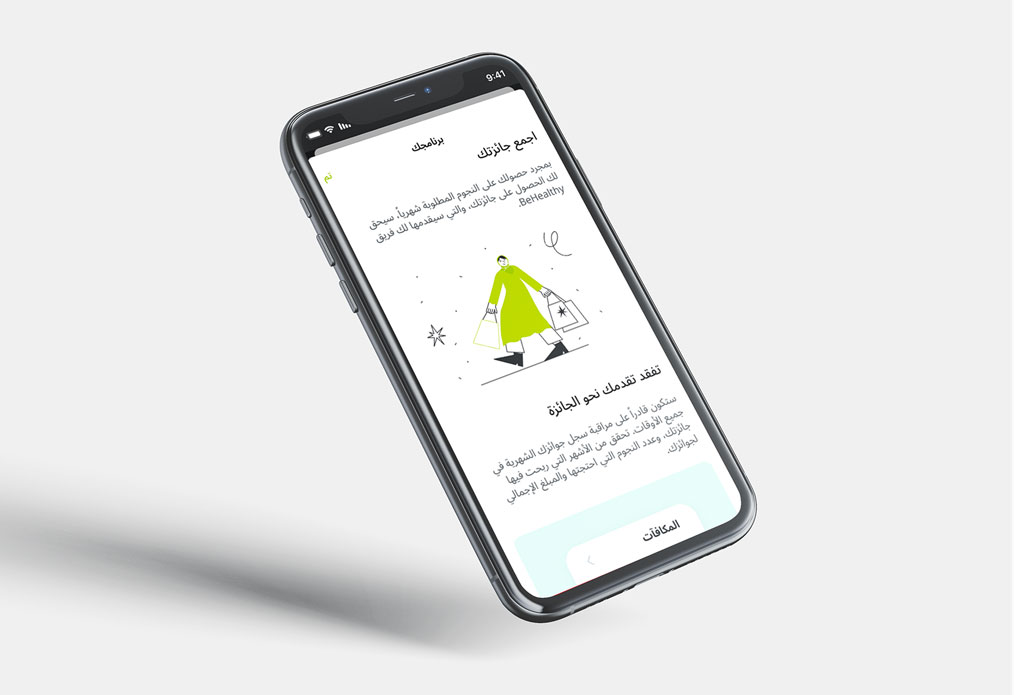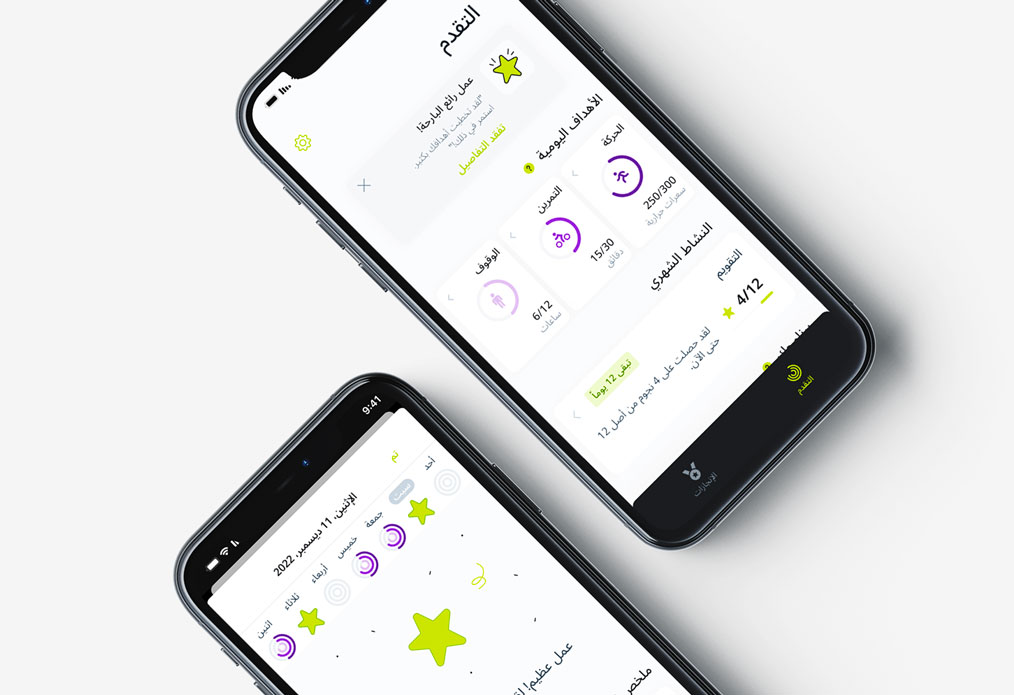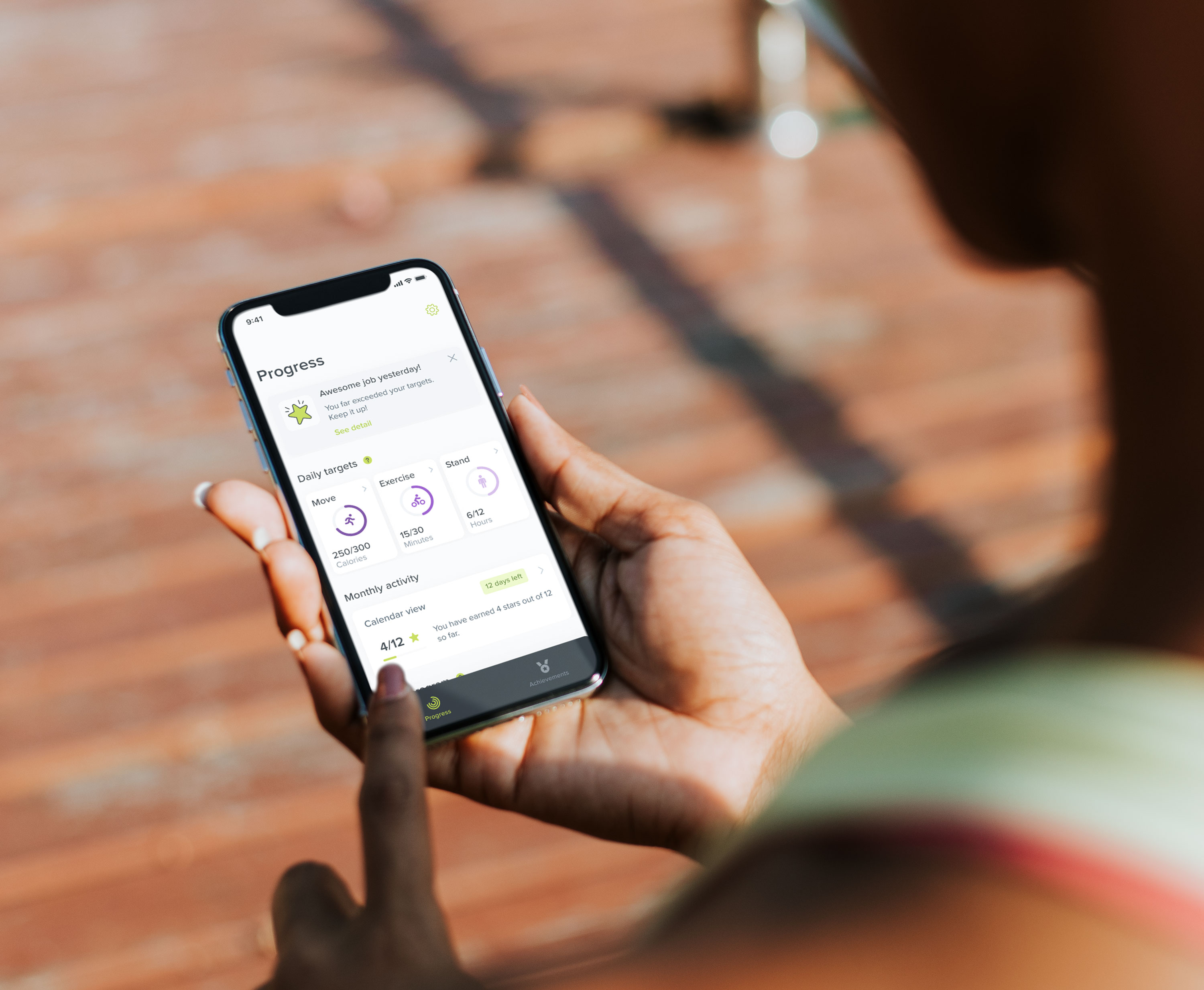
Rewarding wellness
This is how we strengthen customer and employee wellness while elevating the health of businesses.

My Role
I was a member of the product team, serving as a UX Designer alongside the Product Managers, Business Analysts, and Visual Designers on the project. I contributed to the design process from the initial concept to the final visual design, prioritizing features for implementation, and delivering assets to our development team. Our team in Globant collaborated closely with Apple as our partner.
The Challenge
We faced the challenge of utilizing gamification to create a rewarding system, motivating users to integrate physical activities into their daily routines. This led to the creation of BeHealthy, a highly customizable program that incentivizes users for achieving monthly goals aligned with three activity targets: Move, Exercise, and Stand (mirroring Apple Watch activity rings). Our program was straightforward, achieving personal daily targets earns users a star, users accumulate stars to reach a personalized monthly goal, and meeting that goal entitles them to a program reward.
The initial idea was for users to enroll in the program, purchase an Apple Watch, and have its value reimbursed to them month by month as they earned their rewards. This way, if they achieved their activity goals, they could get their Apple Watch for free, in addition to staying active.
The Project
We envisioned a product ecosystem. The BeHealthy program's ecosystem requires 1. a website to inform potential users about the program and allow them to sign up, 2. the BeHealthy iOS mobile app for users to track their progress, and 3. an Apple Watch to record their daily activity data. The BeHealthy app retrieves this data from the Apple Watch to show the user how many stars they are earning throughout the month and track their progress towards earning rewards.
Fostering Holistic Well-being: A Blueprint for Elevating Customer, Employee, and Business Health
The BeHealthy program was designed as a white-label solution, making it potentially usable by sponsor companies as a rewards program for their customers or employees.
BeHealthy leverages hyper-personalized goals and and gamified algorithms to recognize, encourage and reward physical activity. Rewards are determined by sponsor and can be anything from points in an existing loyalty program to payments toward a new Apple Watch. This way, program is highly configurable and can be adapted to serve a number of goals and industries, from insurance to retail and telco.
Expanding Horizons: The Android Odyssey in Our Wellness Journey
While the project began as a partnership with Apple, aiming to expand the program to markets where the iPhone wasn't the dominant player, we chose to broaden our reach by developing an Android version.
This shift posed new challenges for the program. On one hand, we couldn't leverage the Apple Watch activity rings for users to earn their daily stars, a fundamental change in the program's core element. On the technological front, as activity data was originally sourced from the Apple Watch, we had to pivot towards integrating with other wearables like Google Fit and Fitbit. From a UI design perspective, it meant comprehending Android's UI patterns and behaviors, along with constructing a new library for this operating system.
After months of dedicated effort, the Android app became a reality.
Crafting Cross-Cultural Harmony in UX: Lessons from the Middle East
Our UX design journey took an exciting turn as we partnered with a sponsor from the Middle East. This presented an array of challenges and opportunities. The translation to Arabic wasn't a mere linguistic shift; it required a thoughtful reimagining of elements to accommodate the language's unique nuances, such as inverted reading pattern and text expansion.
In navigating these complexities, Apple emerged as a crucial ally, sharing its expertise in designing interfaces for a multitude of languages and alphabets.
And it doesn't end with language and UI. Redesigning illustrations introduced a cultural dimension, emphasizing the importance of authenticity. Ensuring that visuals respected cultural norms, such as depicting women wearing hijabs, added a layer of consciousness to our design evolution.
Reflections
Embarking on the BeHealthy project has been a transformative journey that not only deepened my understanding of UX design but also enriched my professional and personal growth.
Working alongside a diverse team fostered a collaborative environment. The synergy between team members, coupled with our partnership with Apple, demonstrated the power of collaborative innovation. The shared vision and collective expertise propelled the project forward.
The systematic approach to design, from concept to code, was instrumental in overcoming challenges and refining our solution. Our commitment to understanding the problem, devising strategic questions, and iterating through prototypes ensured a design evolution that was not only robust but also aligned with the project's goals.
The BeHealthy program, designed as a white-label solution, showcased the potential to positively impact customer, employee, and business health simultaneously. The integration of hyper-personalized goals and gamified algorithms exemplified how technology can be harnessed to promote holistic well-being and enhance the health of individuals and organizations.
The decision to develop an Android version showcased our team's adaptability and commitment to innovation. Overcoming challenges such as pivoting from Apple Watch to other wearables and understanding Android's UI patterns underscored our ability to navigate diverse technological landscapes, broadening the program's reach and impact.
Partnering with a sponsor from the Middle East brought forth unique challenges that highlighted the importance of cross-cultural sensitivity in UX design. From linguistic considerations to cultural nuances, the experience reinforced the significance of authenticity and inclusivity in creating designs that resonate with diverse audiences.
In conclusion, the BeHealthy project was more than a UX design endeavor—it was a holistic exploration of innovation, collaboration, adaptability, and cultural sensitivity. I must acknowledge the wonderful individuals I had the privilege of working with. Their dedication, creativity, and collaborative spirit made them not just colleagues but true team players.
As I reflect on this transformative journey, I look forward to applying these insights in future projects, continuing to evolve and contribute to the ever-changing landscape of user experience design.
